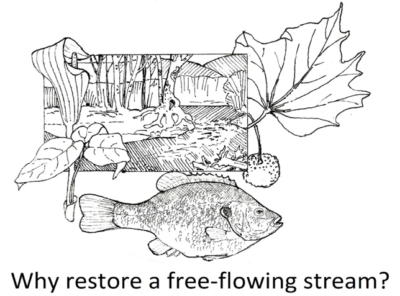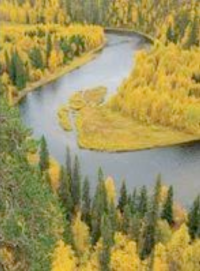Many of us think of rivers and streams as fixed geographic features. In fact, stream channels and the ecosystems that go with them are dynamic parts of our landscape that depend on a delicate equilibrium of natural forces. Streams are characterized by a channel and surrounding alluvial flood plain that represent the geomorphic process of erosion and sediment transport. This channel structure results from an ongoing state of adjustment where local reaches of the stream are intimately interconnected with each other.
A local change to the stream as seemingly inconsequential as occasional access for off road vehicles can affect the stream over large distances both up and down stream. And it’s not just the structure of the stream itself. The surrounding ecosystem depends upon the processes that create the stream environment. Trees such as sycamore, box elder, and sweetgum are adapted to use exposed gravel bars as seedbeds. Some of our favorite wildflowers require the rich soil of regularly refreshed alluvial soils that result from infrequent overflows during flood events.

Dams, of course, represent an extreme alteration of the stream environment with especially severe consequences for the entire river corridor. The body of stagnant water held by the dam causes the deposition of silt in the reservoir, which significantly affects the erosive power of water in the reach below the dam – along with the sustenance of gravel bar environments that many species depend upon. If you have been following the natural history literature, you know how dramatically the dams on the Colorado River have affected the ecology of the Grand Canyon. Silt trapped behind the dam contains clay particles that absorb contaminants from farm and suburban runoff so that those potentially toxic substances are stored in that environment. The coarse sand and gravel deposits that line free-flowing streams do not absorb and retain these chemicals.
Dams prevent the movement of fish that have life cycles that require seasonal migration through the stream for spawning or feeding purposes. Some of the endangered mussel species in Ozark streams have become serious concerns for the managers of our public lands just because the interruption of natural fish migration patterns has interfered with their life cycle. For all of these reasons, the emerging call for the removal of outmoded and poorly maintained dams has gained momentum in recent years, making a vital contribution to the restoration of threatened ecosystems.

